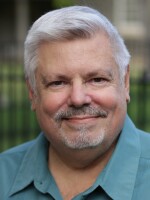Welcome to Classical Pacific on Hawaii Public Radio HPR 2. I’m your host, John Kalani Zak.
It’s May 31st, 2017. On today’s broadcast, we’ll hear the Consortium Classicum performing several pieces by Mozart. W’ell also hear from Delius and Vaughan Williams. And, of course there will be a few surprises thrown in, as well!
One of my favorite pieces is “The Lark Ascending," which we’ll hear today. I have fond memories of this piece that go back to the beginning of my career. After film school at UCLA I was hired as lighting director at ABC in Hollywood. Shortly after I began working there I met and became friends with Dan Flannery, a brilliant lighting designer who had just moved to LA from New York. He had designed for Broadway and had also done some of the biggest rock concerts of the time. Dan was hired by Ernest Fleischmann, the artistic director of the Los Angeles Philharmonic Orchestra, to design the first-ever “Visual Symphony” for their summer season at the Hollywood Bowl. Fleischmann was known as a tough cookie. He had built the LA Phil into a successful organization. He was also quite innovative.
The concept of a Visual Symphony was to meld dance, lighting, and visual effects and, occasionally, pyrotechnics with performances of great pieces of classical music, to be presented in the open-air setting of the Hollywood Bowl. Zubin Mehta was the conductor at that time and he loved the idea. His almost child-like enthusiasm was infectious. Those of the “old school” were somewhat aghast, but Fleischmann determined that it would happen, and it did.
I signed on with Dan as an unpaid assistant/helper. I wanted to learn from this guy! What an adventure it was to see that project take shape. This was before the advent of click-track technology, so cueing the lighting and special effects properly was quite tricky, to say the least. Rehearsals were long and complicated, and as the Bowl filled with audience members for the Saturday night premiere, we had not yet seen all the effects operating in unison....the big finale was “The Lark Ascending.”
The performance began with a wing and a prayer, literally. A lone dancer entered from stage left, captured in a pin spot. As she danced across the stage, Dan began to execute his lighting cues. Waves and clouds began to play across the stage and orchestra and onto the arches of the Bowl. A gentle haze began to waft from the sidelines, enhancing the dreamy atmosphere. In the closing moments of the music, the dancer moved down center, waving her arms in a graceful flapping of birds’ wings. Dan cued a laser projection device and the dancer morphed into the image of a lark, which ascended above the orchestra, hovering for an instant, then flying away. Collectively, 17,000 people gasped, never having seen such an effect. Standing in the lighting booth in the middle of the house, Dan and I were awestruck by the audience reaction.
Dan went on to design the lighting for first “Star Wars” concert, complete with light sabers flashing above the heads of the audience. He also designed the “E.T” concert at the Bowl, with John Williams conducting his own music. I was right there with him. Part of the fun was the “after party” at a restaurant called “Simply Blues” as we would all gather and “debrief” about the night’s performance. Sometimes musicians who were recording up the street at Capitol Records would come during a dinner break, sometimes staying to play for the small after dinner crowd. I remember enjoying a private performance by Stevie Wonder there one evening. But, I digress.
Dan went on to design the visuals for performances by the Boston Pops and the Cleveland Orchestra, among many others. To this day, he travels the world as a sought-after production designer and director. We are still friends across the miles.
The melding of classical music with visuals can be a thrilling experience when done with grace and sensitivity. What an adventure! How exciting it was to be even a small part of such a journey into uncharted territory. There have been countless Visual Symphonies of one sort or another, but as with everything, there is only one first time!
Classical Pacific began in February, 2017, as a result of Hawaii Public Radio’s ongoing commitment to give listeners across Hawaii and around the world more of what they love, on two networks: HPR 1 and HPR 2. Airing five days a week at 3 P.M. Hawaii time, the series features the finest of the world’s classical music, while also shining a spotlight on orchestras, artists, and composers of the Pacific region, including Polynesia, Chile, Colombia, Mexico, The U.S., Canada, China, Japan, Korea, Russia, Indonesia, New Zealand and Australia. We’ll also add spice with indigenous and World music that is creating new musical languages and collaborations worldwide.
Classical Pacific and all Hawaii Public Radio programs are available online at our website: hawaiipublicradio.org. You can also download the free app for your mobile device and take HPR with you whenever and wherever you travel! Just type H - P - R in the search box of your App. store!





